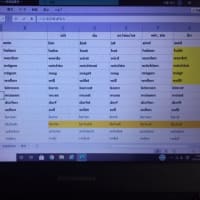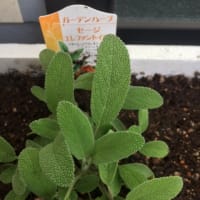4月5日 月曜日 曇り(7 :30時点)
248日/366日 英語学習248日目 目標設定までの残日数:118日
目標設定期日まで残り118日となってしまいました。
今日の名言・格言・諺(a saying ; a famous saying ; a well-known saying ; a proverb)
(今日の名言は知らない人が殆どかもしれません。Elbert Hubbard エルバート・ハバードというアメリカの雑誌編集者です。
The greatest mistake you can make in life is be continually fearing you will make one.
我々が人生において犯す最大の過ちは、間違いを犯しはしないかと絶えず恐れていることである。
外国語学習(英語学習)においても同様のことが言えますね。英語をミス無くうまく話そうとか考えず、ミスを犯すことは上達への近道だと、考えを変えて今日から新たな気持ちでGo ahead!
でも、ミスは、なぜミスを犯したのか? ミスに気づき、訂正することをしなければなりません。
今日の話題は、5Sです。
今朝Lineを見たら、こんなメッセージが知り合いのフランス人の女子学生から入っていました。
ホテルスクールに3月入学し、通常2年間の課程を、6か月間で終了する、エリート育成コースを受講し始めたばかりの女性です。
数行日本語で書かれていました。(がそれは割愛)
Je n’ai pas pu vérifier ce que je t’ai écrit en japonais donc il doit y avoir pleins de fautes. Je vis la où je suis à l’école et je n’ai pas tous le temps internet .
私の書いた日本語間違い確認できなかったから違いだらけかも。今、通っている(ホテル)学校に住んでいるのでインターネットいつでも使えるわけなじゃないのよ。
Est-ce que tu connais la loi des 5 S ? (Seiketsu, seiri, seiton, seiso et shitsuke)
(清潔、整理、整頓、清掃、躾) 5Sの法則って知ってる?
まだ、彼女に返事はしていないのですが、どんな内容で返事するか思案中。
多分、授業で日本の5Sについて学んだものと思われます。それで、知っているかと聞いてきたのでしょうね。この分野は、僕のある意味専門分野でもありますので、彼女への返答をどんな内容にするか? 5Sについて詳細に個人意見を含めて、説明するか? という点で悩んでいます。
5Sは、日本独自のもので、Toyota Production Systemの枠内で生まれたものであることは誰でもがしっていることですね。今では、ホスピタリティ産業等あらゆる分野に応用されています。
フランス語ですと、5Sは、La méthode des 5 « S » と訳されといますが、「ORDRE」(英語Order)と訳されます。La méthode qualité des 5 S
Ordonner/Ranger/Dépoussiérer, Découvrir des anomalies/Rendre évident/Être rigoureux
整理:Seiri : Débarras (ranger) : supprimer l'inutile
整頓:Seiton : Rangement (ordre) : situer les choses/
清掃:Seiso : Nettoyage (nettoyage) : (faire) scintiller/
清潔:Seiketsu : Standardiser (propre) : standardiser les règles
躾:Shitsuke : Discipline (éducation) : suivre et progresser
英語では?
ということでWhat is 5S? で調べてみました。いくつかいい説明がありましたが、下記の説明が分かりやすかったので、今日は、フランス人の彼女に返答を考えながら、英語での単語、表現を徹底的にやってみたいと思います。
What is 5S? An Explanation of the Elements of 5S for a Lean Culture

On Friday's post I went over Lean initiatives from a high level, and how the elements of 5S are an integral part of a lean initiative. Lean thinking and methodologies are an important part of creating efficiency, increasing collaboration, and ultimately increasing customer satisfaction, all in an effort to increase your company's bottom line. Now, as stated in some of the feedback I have received on LinkedIn groups, Lean thinking is a culture mindset in your company. There are many tools to aid you in this, but if not adopted from leadership down, lean is not as effective. One of these tools and methodologies are the elements of 5S. If you are asking now, "What is 5S?" no worries, read the below, and you will be prepared to read the rest of my LEAN series over the next couple of weeks! As always, feel free to email me or connect with me on LinkedIn so we may discuss further or I can consult you on how to make your facility more lean.
What is 5S?

If you are sitting there wondering what is 5s or what makes up the elements of 5s, don't fret, I will explain each in detail below:
What is 5S: Sort
Sort is the identification of the most successful physical organization of the workplace. It has been variously defined as Sort, Systematization or Simplify. It is the series of steps by which we identify things which are being held in the workplace when they shouldn't, or are being held in the wrong place. Put simply, we may identify a large area devoted to tools or gauges, some of which are needed regularly and some used infrequently. This brings all sorts of problems, including:
• Operators unable to find the item they need, being unable to see wood for trees. The time spent searching is a waste and if we only held the items needed regularly in a prominent position we would save time.
• Quality issues when gauges are not calibrated on time because too many are held.
• Safety issues when people fall over things.
• Lockers and racking cluttering the workplace making it hard to move around or to see each other and communicate.
We have to eliminate excess materials and (work-in-process), WIP. We shoul
d see inventory and WIP reduction as part of the implementation of the lean approach or as an element of 5S. Excess materials and inventory, are in fact, wastes. The answer is that keeping inventory and WIP to a minimum is simply a good practice using common sense.
The major element of Sort is simply a critical, objective look at the area. Involving cross-functional teams, or looking at each other's areas, is the first step. People tend to be blind to failings in their own work place and a fresh pair of eyes are useful.
Another element of the standard approach is 'red tagging' where items are given a tag which says what the item is, which location it is in, and when it was identified in this location. We then leave the area for a while and anybody using the item notes this. We go back some time later and can readily identify things that haven't moved, or been used. Items which have not been used can then potentially be disposed of in that area. As a first pass we should perhaps create a quarantine area before throwing items away, selling them or reworking them into something else. Other items may be deemed necessary, but used infrequently and so an alternative location can be found. If the operator needs a particular tool only once or twice a month then a short walk is not a problem, especially if the space saved on the workbench helps to make the workplace more productive, or helps address quality issues.
What is 5S: Set
Setting is the series of steps by which the optimum organization identified in the first pillar, sort, and are put into place. The standard translation is orderliness, set in order, straighten and standardization. The sorting out process is essentially a continuation of that described in the Set phase. Removing items to be discarded or held in an alternative location will create space. This space will be visible and facilitate the alternative layout of the area.
In some cases, of course, we are talking about what a fitter will have on his bench, or in racks alongside the bench. In other cases we may be considering where we should locate a piece of equipment, for example, we may relocate a coin press to enable items to be completed in one work area rather than requiring a significant movement down the shop.
This is something which we also undertake when adopting cellular manufacturing. We then look at how we can restructure the work content so that certain operations can be carried out within the cycle of others: for example we may carry out a trimming operation on a steel component while the press which produced it is busy creating the next one.
Standardization includes all the elements of setting out a consistent way of doing things. This includes standard manufacturing methodologies, standard equipment and tooling, component rationalization, drawing standardization, consistency in the documentation which accompanies work, design for manufacture (or concurrent engineering) and standardization in the clerical processes which deliver work to the shop floor and track its progress.
All of this could be said to be part of a basic Total Quality approach. The standard ways of doing things should include error-proofing all areas in the workplace.
What is 5S: Shine
Shine, sweeping or cleanliness are addressed in this phase. The principle here is that we are all happier and hence more productive in clean, bright environments. There is a more practical element in that if everything is clean it is immediately ready for use.
We would not want a precision product to be adjusted by a spanner that is covered in grease which may get into some pneumatic or hydraulic fittings. We would not wish to compromise a PCB assembly by metallic dust picked up from an unclean work surface. Other issues are health and safety (perhaps slipping in a puddle of oil, shavings blowing into people's eyes) and machine tools damaged by coolant contaminated by grease and dust.
The task is to establish the maintenance of a clean environment as an ongoing, continuous program. Sometime should be set aside for cleaning each day, or each shift. (An operator cleaning and lubricating his machine tool, will spot worn or damaged components in advance of problems occurring during production.)
Cleaning is a big part of preventive maintenance (PM). Cleaning critical components of a piece of equipment is already one element of the activities carried out under the PM banner.
The implementation of Shine revolves around two main elements. First, this identifies who is responsible for which areas. Secondly, is the schedule, which says who does what at which times and on which days. Some of these happen before a shift begins, some during the shift and some at the end. Again, this is very reminiscent of what we do when adopting PM.
The goal is to minimize the downtime needed to keep the facilities clean.
All operators must make sure that the equipment needed to clean is always available, always ready for use. The excellent parallel to this is set-up reduction. We are talking about simply using common sense. We do not wish to allocate 5 minutes for a bed to be swept on a piece of grinding equipment if the operator is going to spend 4 minutes finding his brush.
What is 5S: Standardization
Standardization can be the thought of as the means by which we maintain the first three 5S concepts. There is a danger in any improvement activity that once the focus is removed and another top priority arises, things go back to the way they were before (the informal system). To prevent a relapse to informal pre-5S, set a schedule by which all the elements are revisited on a regular basis. Focus on controlling 5S and maintaining it continuously.
Continue to red tag the areas, involving people from other departments of the business for a check and balance system. This will identify where standards have slipped. We can’t let them slip after the implementation of this formal system! Review all areas monthly or quarterly to insure %S is being properly maintained and discipline is still in place.
A checklist can be implemented whereby the external visitors can mark the area on a number of key criteria defined at the outset of the program. Are the storage areas still clearly defined? Does the tool rack still have clear outlines or profiles for each tool to be stored in it? Does the area meet the general standards of cleanliness?
What is 5S: Sustain
The final stage of sustain is discipline. Sustain means a formal, rigorous review program to ensure that the benefits of the approach are maintained.
We have to make people want to keep applying good practice in shop organization and housekeeping. In this sense, discipline is perhaps an unfortunate term as it implies people forced to do something, with consequent penalties if they do not. If this must be done to sustain 5S, we have to do it after implementation.
There are a number of elements to any ongoing improvement activity in any business. Of course, each organization varies with the history and culture of that organization. The key points are:
• Communication. We need people to be aware of what we are trying to achieve, and why.
• Education. They need to understand the concepts and the individual techniques.
• Rewards and Recognition. People need to feel that their efforts are recognized. Whether the reward is a senior manager walking past and saying "that's very good, well done" or some form of award (financial gain, prize or formal presentation of a certificate) depends on the organization.
• Time. If we want people to spend five minutes every four hours removing debris from the floor around their machine we have to make sure that we allow them this time. We cannot give this as an instruction yet at the same time push for more time spent achieving productivity targets.
• Structure. We need to identify what is to be done, by whom, and ensure that schedules are updated and clearly visible.
A Conclusion on Lean Initiatives and What is 5s
It is up to the organization as to how to maintain 5S once implemented. Having someone in Top Management ultimately in charge of 5S program with shop floor/office lieutenants, will help, along with Standard Operating Procedures (SOPs).
Ultimately, it is the people on the “shop” floor and in the office to maintain it with proper discipline. As said earlier, use good old common sense to guide you through LEAN initiatives and 5S.
248日/366日 英語学習248日目 目標設定までの残日数:118日
目標設定期日まで残り118日となってしまいました。
今日の名言・格言・諺(a saying ; a famous saying ; a well-known saying ; a proverb)
(今日の名言は知らない人が殆どかもしれません。Elbert Hubbard エルバート・ハバードというアメリカの雑誌編集者です。
The greatest mistake you can make in life is be continually fearing you will make one.
我々が人生において犯す最大の過ちは、間違いを犯しはしないかと絶えず恐れていることである。
外国語学習(英語学習)においても同様のことが言えますね。英語をミス無くうまく話そうとか考えず、ミスを犯すことは上達への近道だと、考えを変えて今日から新たな気持ちでGo ahead!
でも、ミスは、なぜミスを犯したのか? ミスに気づき、訂正することをしなければなりません。
今日の話題は、5Sです。
今朝Lineを見たら、こんなメッセージが知り合いのフランス人の女子学生から入っていました。
ホテルスクールに3月入学し、通常2年間の課程を、6か月間で終了する、エリート育成コースを受講し始めたばかりの女性です。
数行日本語で書かれていました。(がそれは割愛)
Je n’ai pas pu vérifier ce que je t’ai écrit en japonais donc il doit y avoir pleins de fautes. Je vis la où je suis à l’école et je n’ai pas tous le temps internet .
私の書いた日本語間違い確認できなかったから違いだらけかも。今、通っている(ホテル)学校に住んでいるのでインターネットいつでも使えるわけなじゃないのよ。
Est-ce que tu connais la loi des 5 S ? (Seiketsu, seiri, seiton, seiso et shitsuke)
(清潔、整理、整頓、清掃、躾) 5Sの法則って知ってる?
まだ、彼女に返事はしていないのですが、どんな内容で返事するか思案中。
多分、授業で日本の5Sについて学んだものと思われます。それで、知っているかと聞いてきたのでしょうね。この分野は、僕のある意味専門分野でもありますので、彼女への返答をどんな内容にするか? 5Sについて詳細に個人意見を含めて、説明するか? という点で悩んでいます。
5Sは、日本独自のもので、Toyota Production Systemの枠内で生まれたものであることは誰でもがしっていることですね。今では、ホスピタリティ産業等あらゆる分野に応用されています。
フランス語ですと、5Sは、La méthode des 5 « S » と訳されといますが、「ORDRE」(英語Order)と訳されます。La méthode qualité des 5 S
Ordonner/Ranger/Dépoussiérer, Découvrir des anomalies/Rendre évident/Être rigoureux
整理:Seiri : Débarras (ranger) : supprimer l'inutile
整頓:Seiton : Rangement (ordre) : situer les choses/
清掃:Seiso : Nettoyage (nettoyage) : (faire) scintiller/
清潔:Seiketsu : Standardiser (propre) : standardiser les règles
躾:Shitsuke : Discipline (éducation) : suivre et progresser
英語では?
ということでWhat is 5S? で調べてみました。いくつかいい説明がありましたが、下記の説明が分かりやすかったので、今日は、フランス人の彼女に返答を考えながら、英語での単語、表現を徹底的にやってみたいと思います。
What is 5S? An Explanation of the Elements of 5S for a Lean Culture

On Friday's post I went over Lean initiatives from a high level, and how the elements of 5S are an integral part of a lean initiative. Lean thinking and methodologies are an important part of creating efficiency, increasing collaboration, and ultimately increasing customer satisfaction, all in an effort to increase your company's bottom line. Now, as stated in some of the feedback I have received on LinkedIn groups, Lean thinking is a culture mindset in your company. There are many tools to aid you in this, but if not adopted from leadership down, lean is not as effective. One of these tools and methodologies are the elements of 5S. If you are asking now, "What is 5S?" no worries, read the below, and you will be prepared to read the rest of my LEAN series over the next couple of weeks! As always, feel free to email me or connect with me on LinkedIn so we may discuss further or I can consult you on how to make your facility more lean.
What is 5S?

If you are sitting there wondering what is 5s or what makes up the elements of 5s, don't fret, I will explain each in detail below:
What is 5S: Sort
Sort is the identification of the most successful physical organization of the workplace. It has been variously defined as Sort, Systematization or Simplify. It is the series of steps by which we identify things which are being held in the workplace when they shouldn't, or are being held in the wrong place. Put simply, we may identify a large area devoted to tools or gauges, some of which are needed regularly and some used infrequently. This brings all sorts of problems, including:
• Operators unable to find the item they need, being unable to see wood for trees. The time spent searching is a waste and if we only held the items needed regularly in a prominent position we would save time.
• Quality issues when gauges are not calibrated on time because too many are held.
• Safety issues when people fall over things.
• Lockers and racking cluttering the workplace making it hard to move around or to see each other and communicate.
We have to eliminate excess materials and (work-in-process), WIP. We shoul
d see inventory and WIP reduction as part of the implementation of the lean approach or as an element of 5S. Excess materials and inventory, are in fact, wastes. The answer is that keeping inventory and WIP to a minimum is simply a good practice using common sense.
The major element of Sort is simply a critical, objective look at the area. Involving cross-functional teams, or looking at each other's areas, is the first step. People tend to be blind to failings in their own work place and a fresh pair of eyes are useful.
Another element of the standard approach is 'red tagging' where items are given a tag which says what the item is, which location it is in, and when it was identified in this location. We then leave the area for a while and anybody using the item notes this. We go back some time later and can readily identify things that haven't moved, or been used. Items which have not been used can then potentially be disposed of in that area. As a first pass we should perhaps create a quarantine area before throwing items away, selling them or reworking them into something else. Other items may be deemed necessary, but used infrequently and so an alternative location can be found. If the operator needs a particular tool only once or twice a month then a short walk is not a problem, especially if the space saved on the workbench helps to make the workplace more productive, or helps address quality issues.
What is 5S: Set
Setting is the series of steps by which the optimum organization identified in the first pillar, sort, and are put into place. The standard translation is orderliness, set in order, straighten and standardization. The sorting out process is essentially a continuation of that described in the Set phase. Removing items to be discarded or held in an alternative location will create space. This space will be visible and facilitate the alternative layout of the area.
In some cases, of course, we are talking about what a fitter will have on his bench, or in racks alongside the bench. In other cases we may be considering where we should locate a piece of equipment, for example, we may relocate a coin press to enable items to be completed in one work area rather than requiring a significant movement down the shop.
This is something which we also undertake when adopting cellular manufacturing. We then look at how we can restructure the work content so that certain operations can be carried out within the cycle of others: for example we may carry out a trimming operation on a steel component while the press which produced it is busy creating the next one.
Standardization includes all the elements of setting out a consistent way of doing things. This includes standard manufacturing methodologies, standard equipment and tooling, component rationalization, drawing standardization, consistency in the documentation which accompanies work, design for manufacture (or concurrent engineering) and standardization in the clerical processes which deliver work to the shop floor and track its progress.
All of this could be said to be part of a basic Total Quality approach. The standard ways of doing things should include error-proofing all areas in the workplace.
What is 5S: Shine
Shine, sweeping or cleanliness are addressed in this phase. The principle here is that we are all happier and hence more productive in clean, bright environments. There is a more practical element in that if everything is clean it is immediately ready for use.
We would not want a precision product to be adjusted by a spanner that is covered in grease which may get into some pneumatic or hydraulic fittings. We would not wish to compromise a PCB assembly by metallic dust picked up from an unclean work surface. Other issues are health and safety (perhaps slipping in a puddle of oil, shavings blowing into people's eyes) and machine tools damaged by coolant contaminated by grease and dust.
The task is to establish the maintenance of a clean environment as an ongoing, continuous program. Sometime should be set aside for cleaning each day, or each shift. (An operator cleaning and lubricating his machine tool, will spot worn or damaged components in advance of problems occurring during production.)
Cleaning is a big part of preventive maintenance (PM). Cleaning critical components of a piece of equipment is already one element of the activities carried out under the PM banner.
The implementation of Shine revolves around two main elements. First, this identifies who is responsible for which areas. Secondly, is the schedule, which says who does what at which times and on which days. Some of these happen before a shift begins, some during the shift and some at the end. Again, this is very reminiscent of what we do when adopting PM.
The goal is to minimize the downtime needed to keep the facilities clean.
All operators must make sure that the equipment needed to clean is always available, always ready for use. The excellent parallel to this is set-up reduction. We are talking about simply using common sense. We do not wish to allocate 5 minutes for a bed to be swept on a piece of grinding equipment if the operator is going to spend 4 minutes finding his brush.
What is 5S: Standardization
Standardization can be the thought of as the means by which we maintain the first three 5S concepts. There is a danger in any improvement activity that once the focus is removed and another top priority arises, things go back to the way they were before (the informal system). To prevent a relapse to informal pre-5S, set a schedule by which all the elements are revisited on a regular basis. Focus on controlling 5S and maintaining it continuously.
Continue to red tag the areas, involving people from other departments of the business for a check and balance system. This will identify where standards have slipped. We can’t let them slip after the implementation of this formal system! Review all areas monthly or quarterly to insure %S is being properly maintained and discipline is still in place.
A checklist can be implemented whereby the external visitors can mark the area on a number of key criteria defined at the outset of the program. Are the storage areas still clearly defined? Does the tool rack still have clear outlines or profiles for each tool to be stored in it? Does the area meet the general standards of cleanliness?
What is 5S: Sustain
The final stage of sustain is discipline. Sustain means a formal, rigorous review program to ensure that the benefits of the approach are maintained.
We have to make people want to keep applying good practice in shop organization and housekeeping. In this sense, discipline is perhaps an unfortunate term as it implies people forced to do something, with consequent penalties if they do not. If this must be done to sustain 5S, we have to do it after implementation.
There are a number of elements to any ongoing improvement activity in any business. Of course, each organization varies with the history and culture of that organization. The key points are:
• Communication. We need people to be aware of what we are trying to achieve, and why.
• Education. They need to understand the concepts and the individual techniques.
• Rewards and Recognition. People need to feel that their efforts are recognized. Whether the reward is a senior manager walking past and saying "that's very good, well done" or some form of award (financial gain, prize or formal presentation of a certificate) depends on the organization.
• Time. If we want people to spend five minutes every four hours removing debris from the floor around their machine we have to make sure that we allow them this time. We cannot give this as an instruction yet at the same time push for more time spent achieving productivity targets.
• Structure. We need to identify what is to be done, by whom, and ensure that schedules are updated and clearly visible.
A Conclusion on Lean Initiatives and What is 5s
It is up to the organization as to how to maintain 5S once implemented. Having someone in Top Management ultimately in charge of 5S program with shop floor/office lieutenants, will help, along with Standard Operating Procedures (SOPs).
Ultimately, it is the people on the “shop” floor and in the office to maintain it with proper discipline. As said earlier, use good old common sense to guide you through LEAN initiatives and 5S.




















※コメント投稿者のブログIDはブログ作成者のみに通知されます